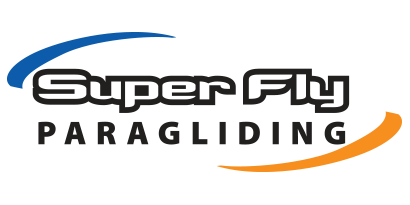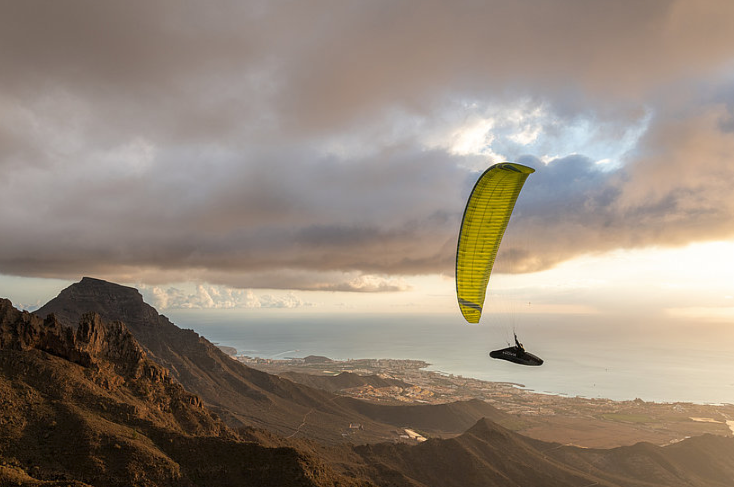Nova XENON (please contact us to be added to the waitlist)
$4,500.00
Product Details
The XENON (EN/LTF D) is an ultralight two-liner for experienced pilots. Excellent glide performance, simple handling and a high degree of stability guarantee extensive XC miles without the risk of fatigue.
Two-liner | cells: 65 | aspect ratio: 6.7 | weight: 3.15 kg - size 17 | EN/LTF D
Reliable in extreme situations. Challenging launches, long flights in changeable conditions and spot landings in rough terrain - this is what the worlds famous hike & fly races are all about. The XENON (EN/LTF D) was designed to rise to these extreme situations. It offers pilots who want to get the most out of an XC day the perfect package of performance and safety. Thanks to a clever mix of materials, the superlight XENON is also extraordinarily durable.
Achieve top flight. Even at launch you will notice the simple handling, which ensures effortless thermalling for many hours. In accelerated straight flight, the XENON impresses with its glide performance and speed. The great stability and moderate pressure on the B-area allow this performance to be utilised in a relaxed manner, even in lively air. Therefore collapses are really rare. If the XENON does collapses, the reaction is tame for a glider of this aspect ratio. It does not tend to reopen abruptly, responds well to input during asymmetric collapses and shows no tendency to stall during a frontal.
Smart use of materials. With the XENON, we spared no effort to increase performance -including with the choice of materials. Nitinol rods fitted throughout the wing depth of the upper surface increase stability and thus performance. Nitinol is kink-resistant due to its shape memory and has better length stability than conventional nylon reinforcements. When it comes to the cloth, we rely on robust and dimensionally stable cloth in the front area of the upper surface. On the trailing edge we also dispensed with the lightest cloth available in favour of greater stability. This cloth is used for the entire undersurface and the main parts of the upper surface. Optimised in this way, the weight of the XENON is 3.15 kg in size 17.
No compromise with the risers. We use 8 mm slim Kevlar webbing for the risers, which twist very little despite their narrow width. Thanks to their great length stability, the clearly arranged risers make a significant contribution to the trim stability of the XENON. We are happy to accept that the risers weigh about 30 g more per pair than, for example, ultra-light Dyneema "shoelaces". After all, high trim stability and easy riser and line sorting before take off are essential.The Height-Adjustable B-Handles (HAB-Handles) can be adjusted to six different heights and thus optimally adapted to pilot size and harness geometry. The individual adjustment of the B-handles enables more effective glider control in accelerated flight. For weight reduction, we use carbon as an extraordinarily light material. For even more performance, the XENON offered a special solution for the riser: due to a moveable pulley on the B3 main line, the optimum wing twist is maintained even when pulling on the B-handles.
Pilot target group. The XENON (EN/LTF D) was designed for experienced XC pilots and hike & fly competitions. It is also perfect for those who are flying a two-liner for the first time. The XENON is as challenging as its aspect ratio of 6.7 would suggest. To meet the requirements for the pilot target group, we recommend experience in the safe control of gliders with an aspect ratio of at least 6.
Optimal combinations of cloths. For the nose we use the dimensionally stable and UV-resistant Dominico 20D (34 g/m2). On the upper surface trailing edge we also prioritised stability over minimal weight and chose Skytex27 C2 (29 g/m2). On the entire undersurface and most of the upper surface, we use Dominico 10D (25 g/m2), which is outstanding in terms of weight, packing volume and UV resistance. The entire internal construction is made from Skytex27 hard (27 g/m2), and has been additionally reinforced at particularly loaded points on the profile ribs and diagonal ribs.

Efficient risers. Despite the slim width of 8 mm, the Kevlar risers have an extremely low tendency to twist. Thanks to their great length stability, they make a significant contribution to the trim stability of the wing. The Height-Adjustable B-handles can be adjusted and optimally adapted to pilot size and harness geometry. Due to the moveable pulley on the B3 main line, the optimum wing twist is maintained, even when pulling on the B-handles.

Speed optimized aerodynamics. The development of the XENON focused on speed. The profile ensures a high degree of pitch stability even at low angles of attack. In numerous simulations, the ballooning or stress distribution was refined to minimise the deformation of the glider at full speed. The cell openings are designed so that the internal pressure remains perfect even in accelerated flight. The result of these measures is excellent glide performance with exceptionally high stability.



Technology:
Smart stuff.
What we mean by that is, for example, Nitinol. This material can be bent when packing the equipment, but it always returns to its original shape. This characteristic can be very useful! In paragliders, the high-quality Nitinol rods replace the usual nylon rods. They are even more robust and ensure an optimally shaped airfoil contour. In harnesses, the properties of Nitinol are used, among other things, to ensure that the airbag fills with air before take off.
Fewer lines, more performance.
One obvious advantage of two-liners is the reduction of drag caused by the lines. More important is the increased stability and the possibility of B-steering. The B-handles can be used to increase the angle of attack very directly and quickly without deforming the airfoil. Consequently, you can fly faster with the two-liner in lively air than with a three-liner.
Smooth profile nose.
Triple 3D-Shaping could be called an anti-wrinkle treatment for the nose of the wing: with three seams across the entire span of the top sail, we reduce the number of creases which are a consequence of the curvature over two axes. Two axes, because the sail cloth has to align to the profile form and the ballooning also determines a radius which the cloth also has to follow. It is as if trying to fold a piece of paper smoothly around a ball. It is impossible without creases. Triple 3D-Shaping divides the sections to be folded into smaller subsections. This allows us to get close to achieving the ideal crease-free form. The result: the creases on the profile nose are clearly reduced and this leads to better performance.

![[Product_title] - Super Fly Paragliding](http://superflyinc.com/cdn/shop/products/Untitled2_7cd55251-9cdb-4d77-a0a2-bb0dd50f1061_grande.png?v=1641859348)
![[Product_title] - Super Fly Paragliding](http://superflyinc.com/cdn/shop/products/Untitled_9ae68bd7-adc5-4c7f-bd14-f7c986f6b5c3_grande.png?v=1641859349)
![[Product_title] - Super Fly Paragliding](http://superflyinc.com/cdn/shop/products/Untitled_c1dc6a4c-689b-4654-baa6-774ad5903252_grande.png?v=1641859349)
![[Product_title] - Super Fly Paragliding](http://superflyinc.com/cdn/shop/products/Untitled_3d736f57-6136-4df2-9a72-c4c583e50cb2_grande.png?v=1641859350)
![[Product_title] - Super Fly Paragliding](http://superflyinc.com/cdn/shop/products/Untitled3_grande.png?v=1641859348)
![[Product_title] - Super Fly Paragliding](http://superflyinc.com/cdn/shop/products/Untitled_b482faac-df55-45c6-b237-07446d9c3732_grande.png?v=1641859348)
![[Product_title] - Super Fly Paragliding](http://superflyinc.com/cdn/shop/products/Untitled2_246f782d-67bb-4fef-b92a-360fb67185bf_grande.png?v=1641859350)
![[Product_title] - Super Fly Paragliding](http://superflyinc.com/cdn/shop/products/Untitled3_010bbd0c-7473-4cc6-b4a1-2fc895ba3e4b_grande.png?v=1641859349)

![[Product_title] - Super Fly Paragliding](http://superflyinc.com/cdn/shop/products/Untitled2_7cd55251-9cdb-4d77-a0a2-bb0dd50f1061_compact.png?v=1641859348)
![[Product_title] - Super Fly Paragliding](http://superflyinc.com/cdn/shop/products/Untitled_9ae68bd7-adc5-4c7f-bd14-f7c986f6b5c3_compact.png?v=1641859349)
![[Product_title] - Super Fly Paragliding](http://superflyinc.com/cdn/shop/products/Untitled_c1dc6a4c-689b-4654-baa6-774ad5903252_compact.png?v=1641859349)
![[Product_title] - Super Fly Paragliding](http://superflyinc.com/cdn/shop/products/Untitled_3d736f57-6136-4df2-9a72-c4c583e50cb2_compact.png?v=1641859350)
![[Product_title] - Super Fly Paragliding](http://superflyinc.com/cdn/shop/products/Untitled3_compact.png?v=1641859348)
![[Product_title] - Super Fly Paragliding](http://superflyinc.com/cdn/shop/products/Untitled_b482faac-df55-45c6-b237-07446d9c3732_compact.png?v=1641859348)
![[Product_title] - Super Fly Paragliding](http://superflyinc.com/cdn/shop/products/Untitled2_246f782d-67bb-4fef-b92a-360fb67185bf_compact.png?v=1641859350)
![[Product_title] - Super Fly Paragliding](http://superflyinc.com/cdn/shop/products/Untitled3_010bbd0c-7473-4cc6-b4a1-2fc895ba3e4b_compact.png?v=1641859349)
Connect